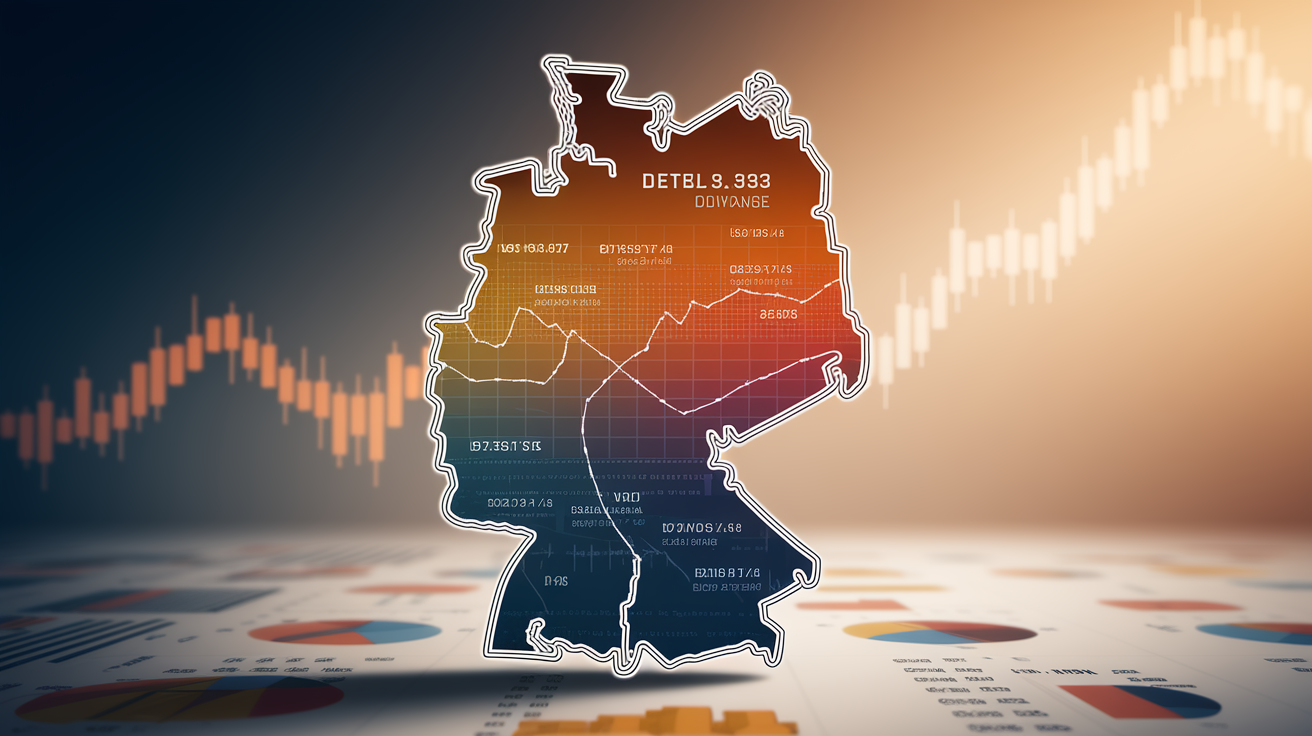The public debt in Germany is a double-edged sword, bringing both investment opportunities and economic risks. While planned investments in defense and infrastructure may increase the debt ratio, these measures also have profound implications for interest rates and inflation. This article sheds light on the current debt situation in Germany and explains how rising bond yields impact the country’s economic stability. Each section provides insights that help investors navigate the economic landscape more effectively.
From the Burden of Debt to the Surge of Inflation: Germany’s Delicate Balance in Managing Public Debt

In recent years, public debt in Germany has received increasing attention, proving to be a complex knot of political and economic challenges. By the end of 2024, state debt amounted to a remarkable 2.51 trillion euros, a slight increase compared to the previous year. The debt ratio, a key indicator for assessing a country’s financial health, stands at around 64% of GDP. This figure reveals the unstable financial balance on which Germany currently finds itself.
The discussion on possibly easing the debt rule has inflamed political sentiments as the government pursues ambitious plans. A budget of 500 billion euros is allocated for urgently needed infrastructure projects, which should be implemented outside the strict constraints of the debt rule. At the same time, an ambitious defense policy requires an additional 500 billion euros. These military spending plans are not only an expression of geopolitical responsibilities but also an inevitably challenging financial undertaking.
These intense spending plans have already shown tangible repercussions in the bond markets. The rise in yields on ten-year government bonds reflects the cautious acceptance of credit markets, which face uncertainties about the fiscal sustainability of the German state. At the same time, these market movements illustrate the risk of rising interest costs, which could further limit the state’s financial maneuvering room.
Another aspect of the complex economic repercussions of high public debt is the increased inflation risk. Greater state demand can exacerbate the already tense economic situation, especially if it leads to shortages of resources and services. These price increase risks directly affect purchasing power and could further intensify inflationary pressures in an unstable economic context.
Long-term forecasts for German public debt call for caution. Experts predict that the debt ratio could rise to an alarming 140% by 2070 unless reforms are implemented to correct the fiscal path. The coming years will show how Germany will manage this delicate balance between future investments and maintaining fiscal stability.
Yields on Government Bonds: A Key to Stability in Times of Rising Public Debt

The yields on government bonds represent a multifaceted indicator that significantly impacts the health and balance of an economy. Recent developments in Germany have shown that the interest rate landscape is becoming increasingly volatile, as the federal government pursues ambitious plans to increase public debt in order to invest in critical sectors such as defense and infrastructure.
The notable increase in German bond yields to 2.93% marks a significant turning point. This is primarily a response to the increased supply of government bonds following expanded borrowing plans. A greater supply of bonds requires higher interest rates to maintain attractiveness for investors, which in turn raises refinancing costs for the state. This dynamic poses a mandatory challenge, especially considering the long-term consequences for economic stability.
Government bonds are a fundamental financing tool for public spending that cannot be covered by the tax burden. However, an increase in debt inevitably leads to a higher interest burden, restricting the maneuvering room of fiscal policy. The state must allocate more budget resources to meet interest obligations, complicating the realization of other public projects.
The repercussions of higher yields on government bonds extend across the entire spectrum of the financial market. As a benchmark for other forms of investment, rising yields significantly influence corporate bond rates and real estate financing costs. In particular, the real estate markets are affected by this development, as higher construction rates can cool the building and real estate industry when banks pass their refinancing costs on to borrowers.
Another crucial element is the connection between rising yields and inflation expectations. In periods when inflation expectations rise, fixed-rate bonds lose attractiveness, leading to higher yields. This development can increase pressure on fiscal policy, as inflation-linked bonds become increasingly expensive, further limiting the fiscal policy maneuvering room.
In summary, yields on government bonds are more than ever an essential indicator of a nation’s economic robustness and planning capacity. The current trend in Germany suggests that the economic implications must be examined carefully. Only through a balance between borrowing and adequate fiscal policy can a healthy macroeconomic environment be ensured in the long term.